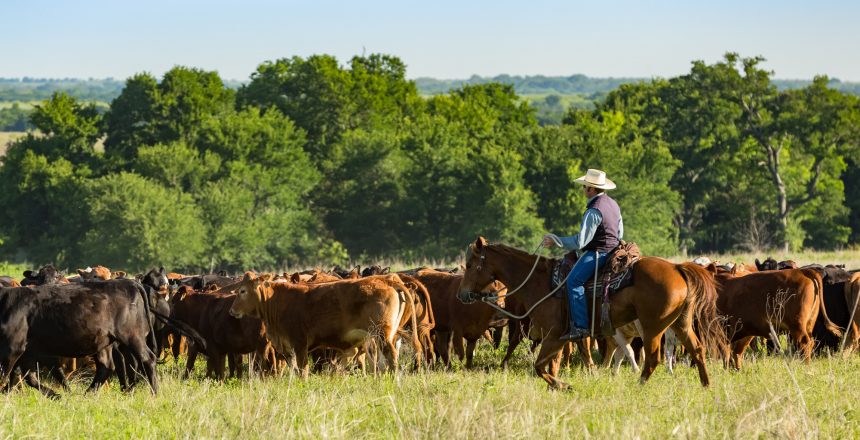Rural America remains the foundation of the nation’s agricultural and energy sectors, yet farmers and ranchers face mounting regulatory challenges that complicate their ability to operate efficiently. Complex and often restrictive land use laws, environmental standards, and water regulations can create uncertainty, leaving many questioning how to balance compliance with sustainability and profitability.
Achieving regulatory reform that supports both environmental protection and agricultural efficiency is crucial. With recent legislative actions and policy shifts, there are emerging opportunities to refine existing regulations to better serve rural communities. Below, we examine key regulatory challenges, recent policy developments, and areas where reform could create a more balanced, forward-thinking approach.
Water Usage and Land Regulations: Striking the Right Balance
The Challenge of Water Regulations
For decades, farmers and ranchers have navigated stringent water regulations, particularly under the Waters of the United States (WOTUS). Designed to safeguard vital waterways, these rules often extend to small streams, ditches, and wetlands that may have little direct impact on water quality.
Farmers frequently express concerns about:
- Unclear Definitions – Determining which water bodies fall under federal jurisdiction remains a challenge, making simple land improvements subject to lengthy approval processes.
- Compliance Burdens – Many agricultural projects require environmental impact studies, costly legal consultations, and extensive paperwork, delaying operations.
A more balanced regulatory approach would clarify WOTUS guidelines while allowing farmers to maintain water stewardship without unnecessary restrictions.
The Complexity of Pesticide and Land Use Regulations
Beyond water concerns, pesticide regulations add another layer of compliance. Farmers must adhere to strict pesticide application rules, buffer zones, and concentration limits, which can vary between federal, state, and local authorities. These overlapping mandates create confusion, leading to inconsistent enforcement.
Similarly, land use regulations sometimes hinder operational flexibility. Restrictions on grazing, crop rotation, and conservation programs often fail to consider local agricultural needs, limiting land productivity. Regulatory reform in these areas could streamline requirements, making compliance more efficient while maintaining environmental protections.
Why Balanced Regulatory Reform Matters
Agricultural sustainability and economic efficiency are not mutually exclusive. Many farmers are eager to implement conservation efforts but require clear, workable regulations to do so. Regulatory reform should focus on:
- Providing Predictability – Clear and stable regulations enable farmers to plan for the future without fear of sudden policy shifts.
- Encouraging Innovation – Flexible water and land policies can incentivize technological advancements such as precision irrigation and integrated pest management systems.
- Reducing Administrative Burdens – Streamlining permitting and reporting processes helps farmers spend less time on paperwork and more time producing food and resources.
A smarter, well-structured regulatory framework would support long-term agricultural resilience while maintaining responsible environmental practices.
Key Policy Developments Shaping Reform
Several recent policy updates have already begun reshaping rural America initiatives and could influence the future of regulatory reform:
1. USDA’s Strengthened Enforcement of the Packers & Stockyards Act (January 2025)
This regulation, designed to increase transparency for contract farmers, aims to promote fair competition in livestock markets. By reinforcing farmers’ rights under contracts with large integrators, the USDA is signaling a commitment to strengthening rural economies.
While this rule doesn’t directly address environmental regulations, it underscores a growing effort to ensure fairness in agricultural markets, potentially influencing broader discussions on regulatory balance.
2. Continued Investment in Clean and Affordable Energy
USDA programs continue to support rural communities with cleaner and more cost-effective energy solutions, including grants and loans for renewable energy installations on farms. These investments are particularly relevant to regulatory reform, as outdated permitting processes often slow down energy adoption. Reducing bureaucratic hurdles could accelerate the shift toward sustainable energy sources in rural areas.
3. Rebuild Rural America Act of 2023
Introduced in mid-2023, this act focuses on infrastructure, economic development, and conservation in rural communities. Funding initiatives under this act could support projects related to:
- Water management system improvements
- Land restoration and conservation projects
- Farmland development incentives
Policies like the Rebuild Rural America Act of 2023 represent a step in the right direction, fostering investment in infrastructure and economic growth. However, to create an ideal environment where rural America can truly flourish, further regulatory refinements are needed to ensure policies fully align with the evolving realities of agriculture and rural economies.
Whether you are constructing infrastructure, upgrading equipment, expanding operations, or implementing renewable solutions, financial institutions are here to support your energy initiatives every step of the way.
Priority Areas for Regulatory Reform
While some progress is being made, several areas still require targeted regulatory reform to improve efficiency and sustainability in rural America:
1. Streamlining Environmental Reviews
The approval process for land expansion, water access, and infrastructure development remains slow and cumbersome. Agencies should create a more efficient review pipeline that minimizes duplicative reporting while maintaining oversight. A centralized digital system could consolidate paperwork, reducing delays for farmers and landowners.
2. Water Policy Clarifications
WOTUS and related regulations need clearer definitions that differentiate between major waterways and temporary water features on farms. Region-specific guidelines could provide more relevant oversight, allowing for responsible water management while preventing excessive restrictions on land use.
3. Aligning Pesticide Regulations
A unified pesticide approval framework across federal, state, and local levels could simplify compliance for farmers. Allowing for localized adaptations while maintaining national safety standards would strike a better balance between public health concerns and agricultural viability.
4. Modernizing Land Use Policies
Rigid land classification rules often restrict farmers from maximizing land productivity. Adaptive land use policies—based on soil quality, climate conditions, and conservation benefits—could support both environmental and agricultural interests.
5. Expanding Farmer Representation in Rulemaking
Involving farmers and ranchers in regulatory discussions from the outset would lead to more practical policy outcomes. Direct engagement in legislative processes ensures that new regulations consider the realities of modern farming operations.
Examples of Successful Collaboration
Despite existing regulatory challenges, some partnerships between government agencies, farmers, and conservation groups demonstrate how effective reform can work in practice:
- Watershed Management Councils – Local councils have successfully developed voluntary water conservation agreements, reducing regulatory pressure while achieving sustainability goals.
- Rotational Grazing Incentives – Some conservation programs now support managed grazing techniques that preserve soil and water quality without restricting cattle movement.
- Renewable Energy on Farms – Farmers installing wind or solar energy systems have benefited from expedited permitting processes in certain states, highlighting how streamlining regulations can encourage sustainability.
These examples underscore that regulatory reform need not weaken environmental protections—it can foster innovative solutions that benefit both industry and conservation.
Leadership in Regulatory Reform
As rural America continues to evolve, organizations that advocate for balanced regulatory reform play a vital role in shaping agricultural and environmental policies. Leading stakeholders—including financial institutions, agricultural associations, and policy advisors—are stepping up to:
- Educate farmers on navigating regulatory changes
- Advocate for policy updates that align with both economic and environmental needs
- Connect agricultural producers with funding opportunities for sustainable investments
By taking a proactive approach, these organizations help ensure that reforms reflect the real challenges facing rural communities.
Looking Ahead: A Smarter Approach to Regulation
For rural America to remain a thriving agricultural and energy hub, regulatory frameworks must evolve to accommodate both environmental concerns and economic realities. The path forward requires:
- Adaptability – Policies that adjust based on real-world conditions and scientific advancements.
- Collaboration – Cooperation between farmers, policymakers, and industry leaders to craft practical solutions.
- Incentive-Based Reform – Encouraging compliance through financial and technical support rather than excessive restrictions.
With continued discussion around rural America initiatives, there is strong potential for meaningful improvements in land use policies, water management, and overall regulatory efficiency. Thoughtful regulatory reform can create a future where farmers, ranchers, and rural businesses can operate sustainably while meeting evolving environmental and economic demands.
By keeping rural voices at the center of the conversation, policymakers can ensure that reforms promote long-term resilience—both for the land and for the communities that depend on it.
Strengthen Your Business with Smarter Regulatory Solutions
Navigating shifting regulations in rural America requires expertise and strategic financial solutions. Ready Capital helps businesses access government-guaranteed USDA and SBA loans to modernize operations, improve land management, and invest in sustainable growth. Contact our team today to explore financing options tailored to support your success in an evolving regulatory landscape.





